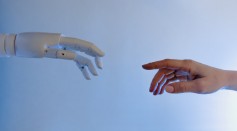epidermis

Living Skin for Robots Moves and Looks Human-Like
Why Do Fingers, Toes Prune Fast When Soaked in Water? Evolution May Have the Answer
What are ‘Iridophores’ and How Are They Keeping Chameleons Camouflaged?
The Secret To a Chameleon’s Color Change—It’s Crystals
Most Popular

How Technology Is Changing the Real Estate Industry?

Study Reveals High Turnover in Scientific Research Careers: What This Means for Future Scientists

Nikolay Karpenko Biography, Photo, Career, Accomplishments

How a Plant-Based Diet Can Protect Against Breast Cancer: Insights from Nutrition Research






